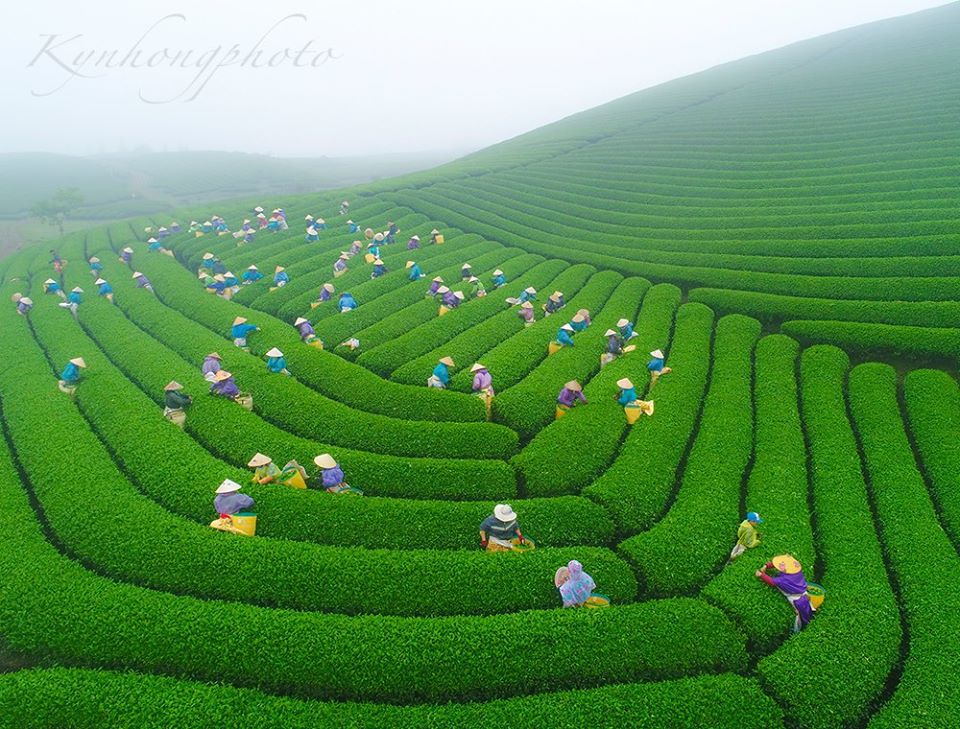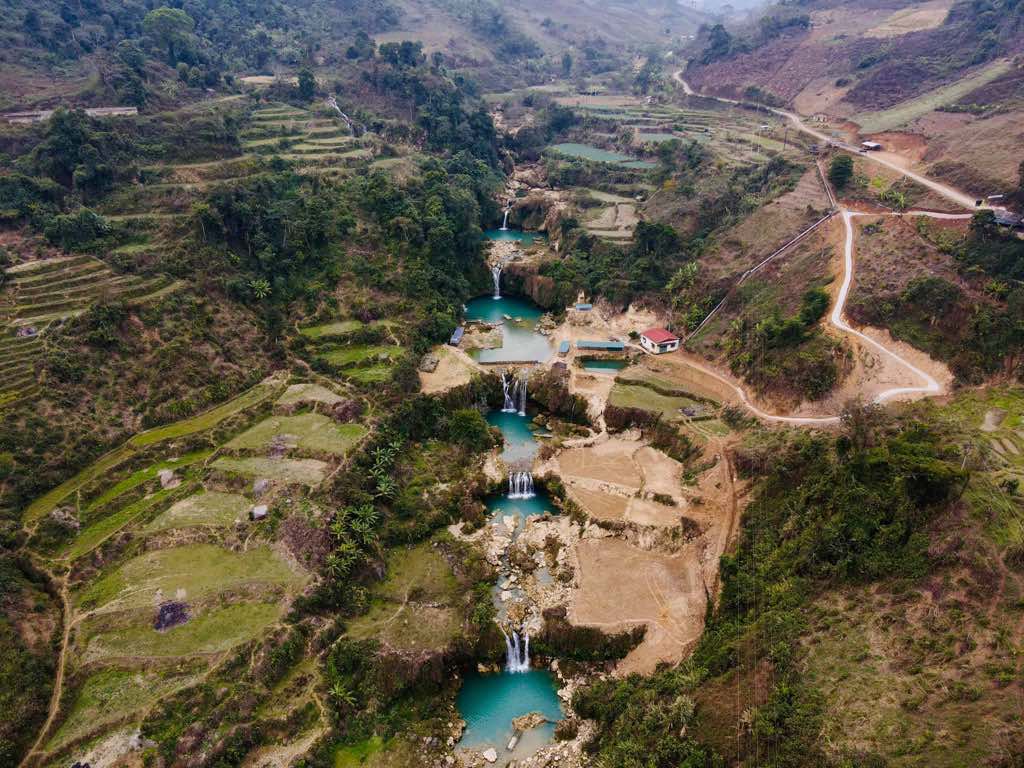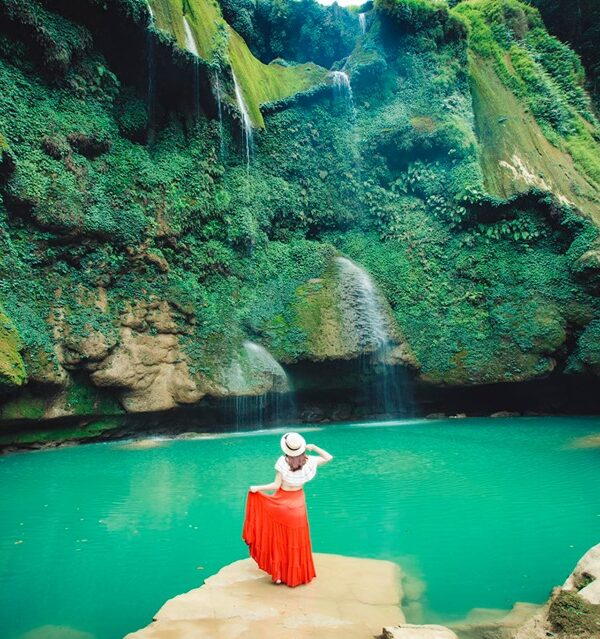Located 25 km from the center of Moc Chau town, Fairy Waterfall is an unspoiled destination, few people know of and have just come into tourism.
Moc Chau and Van Ho are famous for green tea hills, peach orchards, or plum orchards laden with fruit; Now, tourists are attracted by the beautiful scenery of Fairy Waterfall in Chieng Khoa commune, Van Ho district.
Read more:

Tourists coming to Moc Chau are familiar with Dai Yem waterfall, and Chieng Khoa; information about Fairy waterfall is meager because there have not been many tourist activities, plus restrictions on movement amid the Covid-19 pandemic.
In early 2020, Fairy waterfall was officially put into tourism activities; Recently, the entrance to the third floor of the waterfall has also been opened.
Referring to Fairy Waterfall, Thai people often tell each other about the story of two beautiful young women, Kham Khe and Kham Kieu; whose parents were the first white Thais to migrate from Da Bac (Hoa Binh) to reclamation in the countryside of Chieng Khoa. They named the new land Muong May because the climate is often foggy.
People from all over the world gradually flocked to establish villages. The two girls, Kham Khe and Kham Kieu, taught them how to farm, build a house, dance the Xoe, play the Khen… People admired their talent and virtue, but respected them as a fairy and called them Nang Bang and Nang Muong.
People in the area later built a temple, named Nang Bang – Nang Muong temple. Every year in the flowering season in March, people come to burn incense, pray for peace, and hope for a harmonious crop.
According to the custom of odd years, people offer two-legged animals, even four-legged animals; and once every five years, they do a big ceremony, inviting the upper and lower villages to attend.

In addition, March is also the time to organize the Ban flower festival in Chieng Khoa, with the meaning of worshiping Ban – representing the purity and faithful love of Thai people.
This is also an occasion to worship Then (heaven), wish for a bountiful harvest, and be protected from the harassment of Phi (the devil).
Fairy Waterfall consists of 3 floors, each floor has its own unique look. The scenery on the first floor is gentle, with a lake as deep as an adult’s waist; guests can go down to take a bath.
Going to the second floor of the waterfall, guests have to go upstream; although it is a bit difficult to go, the result will be unique photos in the background of the waterfall falling into the emerald green lake.
The lake’s depth on the second and third floors is quite large, the rock surface is also full of moss, which makes it easy to slip and fall; so visitors must be extremely careful when moving.
The estimated height from the foot of the waterfall to the third cascade is about 150 m.
As a beautiful waterfall and few people know, Fairy Waterfall located in a mountainous area is still potentially dangerous; especially the area at the foot of the waterfall, where there are often whirlpools and reefs.
A safe place to bathe is a small stream at the entrance to the falls. Currently, the management board sets up campsites for tourists to rest, organize BBQ parties, and make campfires.
If desired, visitors can interact with local people, and stay overnight at a homestay near the waterfall.
The best season to visit Fairy Waterfall is from March to May when the weather changes from spring to summer. The ticket price to enter Nang Tien waterfall is 20,000 VND/person. The parking fee for a motorbike is 5,000 VND; the car ticket is 20,000 VND.
In addition to sightseeing, guests can take pictures to check in with wooden rafts on the third floor; the price of raft rental is 10,000 VND/person.
Homestay here provides dormitory room service for 120,000 -150,000 VND/night. To book services such as campfires, rent photo shoots, rent shacks, etc., visitors talk to the management team for support.
From the center of Moc Chau town, visitors follow Highway 43 about 25 km, to the turn with the signboard saying Nang Tien Waterfall 2 km; then turn right and continue straight to arrive.
Also, follow this path, continue for 2 km, and you will reach Chieng Khoa waterfall.

